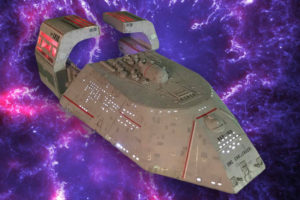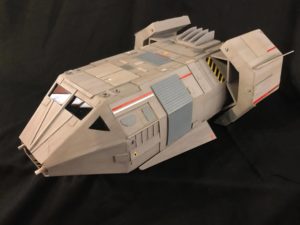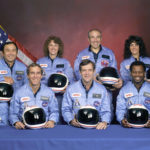There is a rich heritage behind the name Challenger.

Between 1806 and 1993, eight vessels for the British Royal Navy were named HMS Challenger. From 1872 to 1876, HMS Challenger was the command ship for the Challenger Expedition, a pioneering global marine research expedition.
In 1972, the Apollo 17 lunar module Challenger landed on the moon. In 1983, the Space Shuttle Challenger – OV-099 flew Space Transportation System mission #6, deploying the first Tracking and Data Relay Satellite, TDRS-1, and was the first Space Shuttle mission during which a spacewalk was conducted.

On January 28th, 1986, tragedy struck 73 seconds into Space Transportation System mission #51-L, as primary and secondary O-ring seals for the solid rocket booster system failed, causing catastrophic structural failure of the vehicle and loss of her crew. Shuttlecraft McAuliffe pays homage to one of the crewmembers of that fateful flight, a school teacher participating in the “Teacher in Space” Project.
The crew of our Challenger honors the legacy of all officers and personnel who have served aboard any ship carrying that name. “When deciding what to name our ship, several names were thrown around…but we kept coming back to one…Challenger. What better way to honor those courageous seven astronauts than to name our ship after theirs!” ~ James A. Bray, Series Creator / Chief Executive Producer.
Challenger Tragedy Address
“The crew of the space shuttle Challenger honored us by the manner in which they lived their lives. We will never forget them, nor the last time we saw them, this morning, as they prepared for their journey and waved goodbye and ‘slipped the surly bonds of earth’ to ‘touch the face of God.’” ~ President Ronald Reagan – January 28, 1986
“If you’re offered a seat on a rocket ship, don’t ask what seat. Just get on.” ~ Christa McAuliffe



